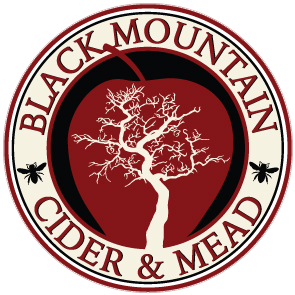WHAT IS CIDER? Cider is fermented apple juice. Sometimes it is made with the addition of other fruits, herbs, and spices. Cider is naturally gluten free and is the original drink of colonial America, popular long before the availability of imported wines and industrialized beer—and before Prohibition saw the destruction of cider apple trees. We do not call our cider “hard cider,” just as one does not name beer or wine “hard” to distinguish it from “root beer,” “ginger ale” or “cheerwine.” These sugary sodas rose to prominence during Prohibition at the same time the word “cider” was misappropriated to suggest cloudy apple juice. Traditionally, the word “cider” always meant fermented apple juice, and it still does everywhere in the world except North America. We don't care for Prohibition, so we don’t call our craft “hard cider.”
THE PROCESS The modern ciderist is an anachronism in a world driven by convenience and immediacy. Cidermaking is slow and labor-intensive mandated not by the human hand or technology, but rather by nature’s whims. We find the choicest apples--the sweet and the sharp--from nearby orchards, hand-press them, and allow the juice to ferment languidly in small batches. We repeat this process many times throughout the fall and early winter as the apples come off the tree, because different apples varieties ripen at different times throughout the harvest. The ripeness of an apple affects is flavor, as well as its sugar and acid levels, all of which contribute to the character of the cider. The cider matures over the next year once the fermentation is complete.
Additionally, we make cider from 100% apple juice and other actual fruit, herbs, and spices—free of manufactured flavors. Cider should be crafted only with real apple juice, not from apple juice concentrate. However,apple juice concentrate is used to produce cider much more often than you might think, especially among large industrial cideries. These cider manufacturers use concentrate fortified with glucose syrup to make cider on a two week cycle all throughout the year, whereas real cider is made during the apple harvest in the fall, fermented from fresh juice pressed from actual apples. If you’re familiar with fermentation and aging at all, you probably know that two weeks is far too short a turn-around time for an decent alcoholic beverage! This cider, sometimes referred to as “white cider” due to its lack of color, is often quickly fermented to 15% and then diluted down to between 4% and 6%. The result of this concentrate-glucose monstrosity is a bland-but-alcoholic wine-beverage that then must be gussied up with fake apple flavors and artificial colors. Sadly, there are even some cideries masquerading as “craft” who also use concentrate and manufactured flavors.
Why would these cideries choose to make—not good, real cider—but bad, alcoholic apple soda? The answer is consistency and expense, as this version of “cidermaking” is easier and cheaper. These cideries would have consumers believe that consistency is the most important factor when choosing a cider, but actually, cider is a natural product, fermented like wine, and exact consistency can be difficult to achieve due to fluctuations in apples’ acid, tannin, and sugar levels. Variations in soil, environment, sunlight and weather that affect how cider will taste—or the terroir of the region—is cherished by real cidermakers but rejected by large industrial cidermakers who just want to turn a profit as easily as possible. Their cider has as much in common with ours as a wine cooler has with a bottle of fine Bordeaux.
CLEAN CIDER Cider is clean when it made without manufactured flavors, whether they be natural or artificial. If we say our cider is made with lavender, it is indeed made with real lavender flowers rather than lavender flavoring.
CIDER IN NORTH CAROLINA Of all the alcohol produced in our state, cider typically the only beverage produced using ONLY produce grown in state. This is not always the case with NC’s numerous wineries and breweries. Other than muscadine and scuppernong grapes, most wine grape varieties do not grow as well in North Carolina’s climate as they do in Europe or California. Therefore, many wine (though not all) producers source certain grapes/juice from other locations, sometimes thousands of miles away. Likewise, some NC breweries use barley that has been malted in the state, but (with rare exception), barley doesn’t grow well as far south as North Carolina, so breweries must import barley from New England, Canada or perhaps Europe. The same is true for much of the hop supply. However, a proper cidery in NC will use apples from this state, making it an authentically North Carolina product.
We graciously adhere to the most rigorous cidermaking standards when crafting our ciders.
















